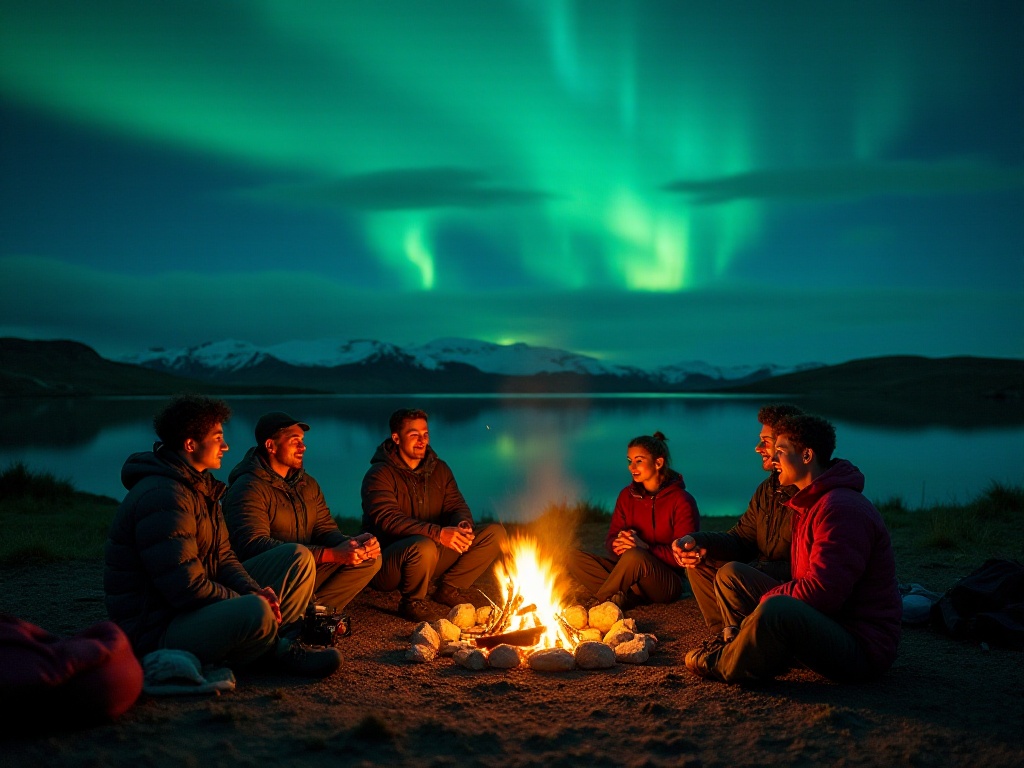My Story
I remember that spring in 2008 when I first set foot in Japan. I was a fresh graduate and new to the workforce then, saving several months of salary to fulfill my dream of seeing cherry blossoms. At the duty-free shop in Narita Airport, I bought a pink notebook with elegant cherry blossoms printed on the cover. Little did I know that this casual choice would lead me on a 15-year journey of travel journaling.
My first entry was simple, just recording the cherry blossoms I saw at Shinjuku Gyoen and an incredibly delicious ramen from a small shop in an alley. The photos were taken with a disposable film camera, and came out a bit blurry. But every time I look at these yellowed photos and messy handwriting, the scene comes back vividly: pink petals floating in the wind, the subtle fragrance in the air, the steaming ramen, and the warm smile of the shop owner.
Since then, I've carried a notebook on every trip. My entries evolved from simple daily logs to richer content. Beyond recording the day's itinerary and feelings, I would draw simple maps, note down addresses of good restaurants, and even record interesting conversations I overheard. When smartphones became common, I started using my phone to record, but maintained the habit of daily journaling.
In 15 years, my travels have covered over 20 countries and stories from more than 300 cities. From Tokyo to Paris, from Chiang Mai to Istanbul, each place holds my words and images. These seemingly scattered records gradually accumulated into a digital treasury of memories on my computer.
Initially, I just posted this content on my social media, but gradually gained some regular followers. They liked my writing, finding the details I recorded helpful for planning their own trips. People started messaging me for specific itinerary advice, asking which ramen shop was the best, or when attractions were least crowded. That's how I unexpectedly discovered that my years of travel notes weren't just personal memories but potentially held commercial value.
Business Models
When it comes to monetizing travel journals, I've observed two main models in the market: one focused on travel agency services, and another on content creation. Each model has its characteristics and suits different types of creators.
Let's start with travel agency services. Today's tourism market can't be satisfied by traditional group tours alone, with more people seeking personalized, in-depth travel experiences. In Ahmedabad, India, I met a guide named Amit who founded Travel Diaries, a specialized travel agency. What impressed me most was that they not only arrange itineraries but also assign a professional "recorder" to each client.
The recorder follows the entire journey, capturing memorable moments with a camera, and helps travelers organize their experiences into vivid journals each evening. Finally, they produce a beautiful travel album. The album includes professionally taken photos, handwritten journal entries, and even collected items from the journey like tickets and passes. This service is particularly popular among those who want to preserve beautiful memories but aren't skilled at recording themselves.
Another typical case is The Travel Diaries. This company specializes in small group custom tours, with a maximum of 8 people per group. They customize unique itineraries based on group members' interests. For instance, if there are photography enthusiasts in the group, they arrange visits to attractions at optimal shooting times; for food lovers, they guide them to hidden local gems known only to locals.
Most special is their nightly "sharing session." Everyone gathers in the hotel lounge or a café, sharing their experiences and feelings while enjoying local specialty drinks. Professional photographers capture these warm moments, and dedicated writers help organize these oral accounts into text. After the trip, everyone receives their own unique travel journal.

Content Creation
In the content creation field, I've particularly followed a journalist named Holly Rubenstein. Her travel podcast has become one of the most popular travel shows on the Apple Podcast platform. For each episode, she invites an interesting guest, whether it's a global traveler, food writer, or explorer.
These guests share their most memorable travel experiences, not just where they went and what they ate, but more importantly, the moments that changed their life trajectories. For instance, in one episode, a retired diplomat shared how meeting a Tibetan elder during his Himalayan trek made him rethink the meaning of life. This depth of sharing makes the show go beyond surface-level travel content to touch on everyone's inner desire for exploration and growth.
Holly's success isn't just reflected in subscription numbers, but more importantly in building a complete content ecosystem. She's turned excellent podcast content into books and produced video shows. Last year, she also launched an online course teaching how to transform travel experiences into interesting stories. This diversified content format allows her to maximize her IP value.
Speaking of content creation, I must mention the Travel Diaries App. It's a product I personally love using. It has a beautifully designed interface and is very user-friendly. You can record text, upload photos, tag locations, and add mood labels anytime. Best of all, it offers one-click physical album generation service.
I've tried their album service, and the quality is indeed excellent. The albums use imported photo paper with high color accuracy and multiple layout options. You can even customize the album cover design. Last Christmas, I turned my Northern Lights travel journal from Iceland into an album as a gift for friends who traveled with me, and they all said it was the most meaningful gift they received.
The success of this App shows us that in this digital age, people actually treasure physical memory carriers more. While electronic devices can store massive amounts of photos and text, the feeling of opening a beautiful album and touching those photos and words with your fingers is something digital devices can't replace.

Monetization Tips
Through years of practice, I've summarized some tips for monetizing travel journals. The most important is content accumulation. Many might think traveling is just about having fun and making simple records. But if you want to turn it into a business, you need a more professional attitude.
Now for each trip, I pay special attention to several aspects: First is detailed itinerary planning, including transportation methods, time arrangements, and budget estimates. Second is accommodation experience, recording hotel location, surrounding environment, room facilities, and service quality. Third is food recommendations, noting not just restaurant names and locations, but also operating hours, average cost, and must-try dishes. Finally, practical tips like the best time to visit attractions, how to avoid crowds, and where to take the best photos.
These details might seem trivial, but they're exactly what help other travelers avoid detours. Over time, this practical information becomes your core asset. Much of my consulting income now comes from this accumulated experience and information.
Second is finding your positioning. The travel market is huge, but you can't and don't need to cover all areas. My advice is to choose one direction you're most familiar with and interested in to dig deep. For instance, I focus on in-depth Asian tours, especially cultural exploration in Japan and Southeast Asia. I spend a lot of time understanding local history and culture, seeking out little-known stories. This focus allows me to provide more valuable content and more easily attract fans truly interested in this field.
For monetization methods, I recommend a diversified strategy. You can start with writing articles and posting videos, which are the most basic content monetization methods. Once you have a certain fan base, you can try taking on custom travel consulting. Many people are willing to pay for help planning their itineraries because they trust your expertise and experience.
When your fan base grows larger, you can consider publishing books or starting paid communities. I now run a paid community of travel enthusiasts interested in in-depth Asian tours. I regularly share exclusive travel guides in the group, organize online sharing sessions, and sometimes lead community members on trips. This diversified income source makes my side business more stable.

Future Outlook
Speaking of the future development of travel journals, I believe there's still much room for imagination. With AI technology developing so rapidly, more innovative business models will surely emerge. For example, AI technology could assist in travel journal creation, helping organize photos, provide writing suggestions, and even automatically generate basic text content.
Virtual reality technology also has great potential. Imagine if you could turn your travel journal into a virtual reality experience, letting others "step into" your travel memories through VR devices and experience what you saw and heard. This might sound like science fiction, but technological development often exceeds our imagination.
Additionally, I think future travel journals will become more social and interactive. Some platforms are already trying to turn travel journals into a social experience, allowing users to share their travel stories in real-time and others to interact and comment immediately. This immediacy and interactivity will make travel journals more vibrant.
Personalized customization will also be an important trend. With technological development, we might be able to automatically generate different styles of travel journals based on each person's interests and travel style. Those who like an artistic style can generate journal-like versions, while those who prefer minimalism can generate minimalist designs.
Finally, I believe the commercial value of travel journals hasn't been fully tapped. They're not just carriers of personal memories but a medium that can deliver value and connect hearts. For both creators and users, travel journals can bring unique value and meaning.
Looking back on these 15 years of travel records, I deeply feel that what's truly valuable isn't how many places you've been or how many photos you've taken, but the thoughts and reflections during the journey, those moments that changed our perceptions and perspectives. If we can pass these precious experiences to others and help them realize their own travel dreams, that's the greatest value of travel journals.
Do you have a habit of writing travel journals? Have you thought about turning it into a side business? Or do you have any unique ideas about the future development of travel journals? Welcome to share your thoughts in the comments. Let's discuss together how to make travel more meaningful and valuable.









